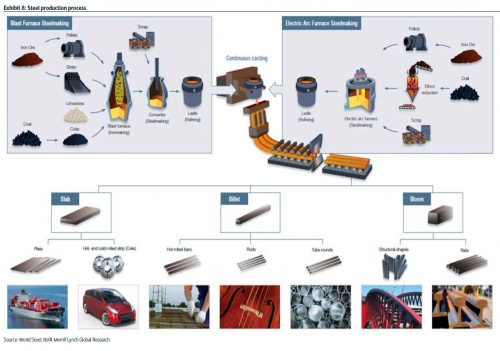Steel Production: Difference between revisions
Jump to navigation
Jump to search
No edit summary |
|||
| Line 6: | Line 6: | ||
*OSE's case would be to produce steel from direct reduction, which is more efficient and lower temperature than a blast furnace. https://en.wikipedia.org/wiki/Direct_reduced_iron | *OSE's case would be to produce steel from direct reduction, which is more efficient and lower temperature than a blast furnace. https://en.wikipedia.org/wiki/Direct_reduced_iron | ||
*Iron mining in the USA - [https://en.wikipedia.org/wiki/Iron_mining_in_the_United_States] | *Iron mining in the USA - [https://en.wikipedia.org/wiki/Iron_mining_in_the_United_States] | ||
*Chromium mining (for stainless steel) - Chromite (FeCrO) is reduced to Ferrochrome (FeCr) via carbothermic reduction. Chromite in Oregon - [https://oregonencyclopedia.org/articles/chromite_mining/#.Xo6DuJ-YU5k] | |||
Revision as of 02:12, 9 April 2020
https://edge.alluremedia.com.au/uploads/businessinsider/2017/11/iron-ore-steel.jpg
OSE Case
- OSE's case would be to produce steel from direct reduction, which is more efficient and lower temperature than a blast furnace. https://en.wikipedia.org/wiki/Direct_reduced_iron
- Iron mining in the USA - [1]
- Chromium mining (for stainless steel) - Chromite (FeCrO) is reduced to Ferrochrome (FeCr) via carbothermic reduction. Chromite in Oregon - [2]
